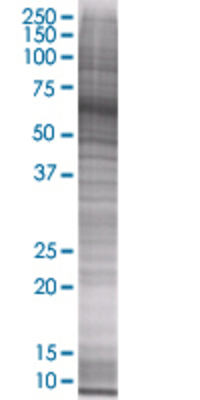| Gene Symbol |
CXCL11
|
| Entrez Gene |
6373
|
| Alt Symbol |
H174, I-TAC, IP-9, IP9, SCYB11, SCYB9B, b-R1
|
| Species |
Human
|
| Gene Type |
protein-coding
|
| Description |
chemokine (C-X-C motif) ligand 11
|
| Other Description |
C-X-C motif chemokine 11|beta-R1|interferon gamma-inducible protein 9|interferon-inducible T-cell alpha chemoattractant|small inducible cytokine B11|small inducible cytokine subfamily B (Cys-X-Cys), member 11|small inducible cytokine subfamily B (Cys-X-Cys), member 9B|small-inducible cytokine B11
|
| Swissprots |
Q53YA3 O14625 Q92840
|
| Accessions |
AAD10206 AAD38327 CAB51859 CAB69205 EAX05774 O14625 AF002985 AAC51845 AF030514 AAC39775 AF352781 AAK52900 AL703031 BC005292 AAH05292 BC012532 AAH12532 BC110986 AAI10987 BP289021 BT006787 AAP35433 DQ895703 ABM86629 EU176355 ABW03806 U59286 AAB17374 U66096 AAD38867 Y15220 CAA75510 NM_001302123 NP_001289052 NM_005409 NP_005400
|
| Function |
Chemotactic for interleukin-activated T-cells but not unstimulated T-cells, neutrophils or monocytes. Induces calcium release in activated T-cells. Binds to CXCR3. May play an important role in CNS diseases which involve T-cell recruitment. May play a role in skin immune responses.
|
| Subcellular Location |
Secreted.
|
| Tissue Specificity |
High levels in peripheral blood leukocytes, pancreas and liver astrocytes. Moderate levels in thymus, spleen and lung. Low levels in placenta, prostate and small intestine. Also found in epidermal basal layer keratinocytes in skin disorders.
|
| Top Pathways |
Cytokine-cytokine receptor interaction, Toll-like receptor signaling pathway, Chemokine signaling pathway
|

